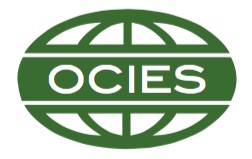What more can we learn from PISA tests? A comparative Analysis of the Long-term Dynamics of the Israeli International Educational Achievements
Keywords:
PISA, International tests, Education, Achievements, Measurement of changeAbstract
One of the most prominent comparative international tests in recent years is conducted by the Programme for International Student Assessment (PISA), which is used to assess students' knowledge of reading comprehension, mathematics, and science. PISA is most known for its goal to compare nations according to a league table ranking system. Israel has taken part in these assessments from its conception and since then it has been gradually decreasing in the world ranking. By 2015 the Israeli students are located between 37-40 out of 70 countries, down from 31-33 in 2000. Using Israel's data throughout the PISA cycles, we aim to offer an alternative comparative view for these international results, based on measures of self-change. These measures show a consistent and significant system-wide improvement of the Israeli educational performance in all three PISA tests since 2000. Not only does this contrast with its downward trend in the international ranking which is biased due to inclusion of more countries, the rate of change was consistently positive over time and surpassing that of its European and American counterparts. Indeed, these measures of change show a general growth of about 23 points over 15 years, which reflects a consistent improvement of 6 to 9 points in average per cycle since 2000 results. In light of these findings, the paper discusses the significance of measurements of change in comparative international tests.
Downloads
Published
Issue
Section
License
The International Education Journal: Comparative Perspectives is the official journal of the Oceania Comparative and International Education Society. The IEJ, (ISSN 1443-1475), publishes a general volume bi-annually in July and December and also publishes Special Editions occasionally. It is a free, open-access scholarly journal, managed by volunteers. There are no article processing charges, or any charges to authors.
In relation to intellectual property, as of 2020, the IEJ: CP claims only first publication rights; copyright of all work published in the journal remains with the authors under Creative Commons copyright license CC-BY-ND (4.0). Author(s) retain all rights to their works, ensuring that reference to the International Education Journal: Comparative Perspectives is clearly stated on any copies made or distribution. Submissions must not involve third parties with a claim to copyright, and be the sole work of the author(s). It is the responsibility of the author(s) to secure permission to reproduce photographs, illustrations, figures or tables. Single images, tables or figures can be re-used . If more than a single image or table are to be re-used authors must attribute first publication to IEJ: CP notify the IEJ: CP Editor. Authors may also make derivative works which are subject to these limitations.
See https://creativecommons.org/licenses/by-nd/4.0/ for more detail.
Re-distributed or used material must be referenced to the International Education Journal: Comparative Perspectives.
